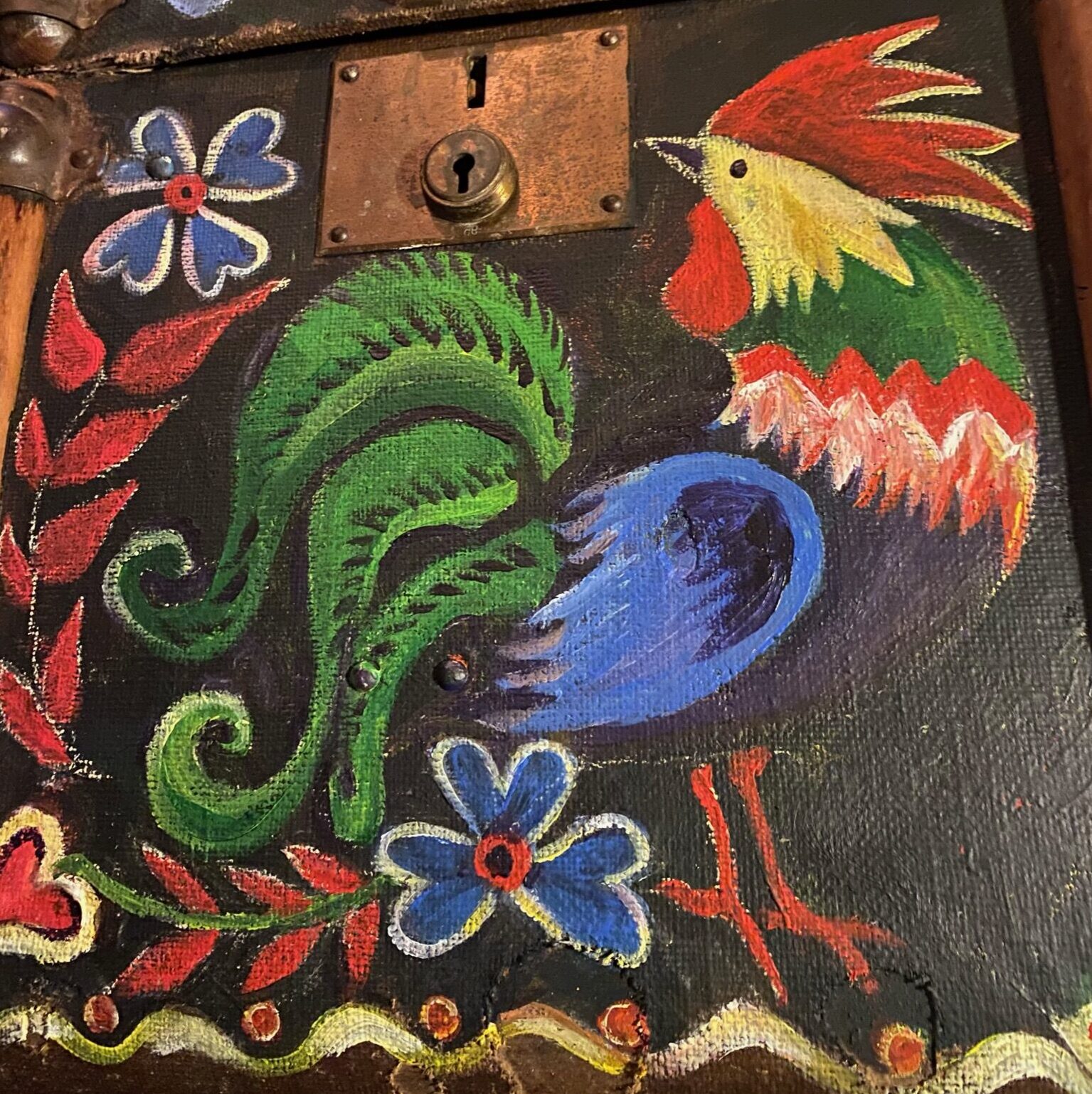“… the true purpose of art is one of resilience… In other words, art expression and the creative process are really manifestations of the drive toward health and well-being”
–Cathy Malchiodi PhD
I’ve always loved making things out of found materials, painting furniture and customising clothing and mending things. Even before I went to art college and formalised my creative leanings, I’ve always found pleasure in upcycling in this way.
I think it must come from my mother who was a war baby and lived through the Berlin blockade as a child with very little food and limited resources. Her mother taught her how not to be wasteful, to be creative with food, clothing and day to day living.
As a child growing up in the Kent countryside, my parents had little money and my mother, with her resourceful efficiency made all my clothes, crotched our knitted jumpers, and even hand-crafted the Christmas decorations out of sweet wrappers and silver foil.
I remember sitting by the fire with her making a rag-rug out of scraps of fabric, candles out of wax stubs and even our Wendy-house furniture out of old orange boxes, always feeling a great sense of satisfaction and pride on completion.
To this day I get an enormous satisfaction out of upcycling furniture and being resourceful in general.
Creative practices in our lives can not only be an economic and sustainable approach to living but also a therapeutic one. As a trained Art Therapist, I’ve had the pleasure of working with clients to support the use of art as a tool for supporting stress, anxiety, and mental health issues. However, I continue to believe that creative practices, like yoga and meditation needs to be imbedded into our daily living and part of our routines.
You can join a class to learn new techniques but to use your creativity as a tool for resilience it works best embedded into our daily lives. So, what better than to use these creative tools to enhance a more self-sufficient lifestyle.
Some of the daily practices you could incorporate to support your resilient mental health and self-sufficient daily routine:
- knitting or other needle/craft work during our downtime hours. Try mending broken clothes before buying new ones, making clothes, woollens, and gifts. Join a knit and natter gathering in your community to share and gather ideas and support.
- keeping a visual diary – a small sketchbook in your bag to record private feelings thoughts and observations throughout your day.
- engaging with nature by drawing or painting landscapes, people, and other scenery. Maybe draw or paint your allotment or garden patch as it progresses, from concept to fruition.
- Observational drawing/painting: Make studies of collected natural or material form- Looking closely at nature helps us to understand it better.
- Portrait drawing and painting each other and ourselves – this can be a very healing and intimate thing to do with a partner or friend. Alternatively join a life-drawing class.
- Painting old furniture – up-cycling rather than buying new.
- Clay/pottery work – make your own crockery, why not?
- Printmaking – Christmas cards?
- Doodling or colouring can even work as an outlet and serve to relax us and still our racing minds.
If you are interested in booking a workshop in Art Resilience then please contact us today via our contact form, we look forwards to hearing from you.

No responses yet